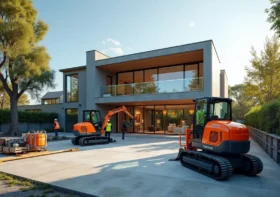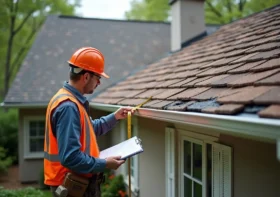Mistakes to Avoid When Remodeling a Historic Home

There’s something magical about stepping into a historic home. The creak of old hardwood floors, the charm of handcrafted moldings, the stories etched into every beam and brick – all of it adds up to a sense of character you just can’t find in new builds. For many homeowners, remodeling a historic property is about more than making updates; it’s about honoring the past while creating a space that truly works for modern life.
But as enchanting as the process can be, it’s also filled with potential pitfalls. Renovating older properties often brings surprises that can derail your plans if you’re not prepared. To make your remodel both practical and enjoyable, here are some of the most common mistakes to avoid.
Take time to plan with intention, keep an eye on what makes your home special, and consider custom remodels of historic homes to help you strike the right balance between preservation and modern comfort.
Contents
Common Pitfalls to Watch For
Here are some of the most frequent mistakes homeowners make and how to avoid them:
1. Jumping in Without a Lifestyle-Focused Plan
It’s tempting to get swept up in Pinterest boards and inspiration photos, but without a solid plan, even the most exciting remodel can quickly turn stressful. Beyond budgets and schedules, think about how you want to live in your home. Do you dream of hosting long dinners in a restored dining room? Would a cozy reading nook in an old bay window make your mornings brighter?
Planning isn’t just about spreadsheets – it’s about designing a life that flows naturally within the home’s historic bones. Building in flexibility (and a contingency budget) for surprises ensures you can adapt when those unexpected quirks of an old house pop up.
2. Ignoring What’s Beneath the Surface
Every historic home has secrets. Some are delightful, like finding original hardwood floors under decades-old carpet. Others, not so much – think outdated wiring, hidden water damage, or the occasional layer of lead paint.
While it’s easy to focus on the visual changes, lifestyle remodeling also means creating a home that feels safe and secure. Bringing in inspectors early helps uncover hidden risks so you can handle them before moving into the fun, decorative details. Imagine the peace of mind knowing your family can relax in a space that’s not only beautiful but also healthy and structurally sound.
3. Erasing the Very Things That Make It Special
Historic homes are full of small details that carry big personality. The curved banister worn smooth by generations of hands, the stained-glass window catching morning light, the ornate trim that frames each doorway – these are the features that make a historic house feel alive.
A common mistake is stripping these away in the name of modernization. Instead, look for ways to highlight them. Restore rather than replace where you can. When you do need to update, choose finishes and materials that complement the home’s period style. Think of your remodel as adding a new chapter to the home’s story, not rewriting it from scratch.
This approach creates a lifestyle experience unlike any other – where every corner tells a tale, and every room holds a touch of history infused with your personal style.
4. Settling for a Team Without the Right Experience
Historic homes aren’t like standard remodeling projects. They need a special kind of care – someone who can balance technical know-how with respect for the home’s story. Hiring a contractor without experience in this area can mean costly mistakes or design choices that clash with the character you’re trying to preserve.
Instead, look for professionals who specialize in historic properties. They’ll know how to source period-appropriate materials, preserve original craftsmanship, and navigate the quirks that come with older structures. More importantly, they’ll help you translate your lifestyle vision into a remodel that feels both timeless and functional.
Living the Dream in a Historic Home
When done right, remodeling a historic home isn’t just about updating square footage – it’s about creating a space that feels deeply personal. Imagine sipping morning coffee in a sunlit kitchen that blends original wood beams with modern appliances. Picture hosting gatherings where friends marvel at your restored crown moldings or cozying up by a fireplace that’s stood for over a century.
The goal isn’t perfection – it’s harmony. By avoiding rushed planning, prioritizing safety, respecting architectural details, and choosing a team that understands historic properties, you’ll create more than a remodel. You’ll create a home that celebrates the past while offering the comfort and convenience you need today.
Final Thoughts
Remodeling a historic home is an adventure. It can test your patience at times, but it can also reward you with a space unlike anything else. A place where heritage meets everyday living, and where modern life is enriched by the echoes of history.
If you’re embarking on this journey, remember:
- Plan thoughtfully, with your lifestyle in mind.
- Look beneath the surface for hidden risks.
- Preserve what makes your home unique.
- Work with experts who understand historic properties.
With these principles in place, your remodel becomes more than a project – it becomes a way of living, one that allows you to enjoy the charm of yesterday while embracing the comforts of today.



